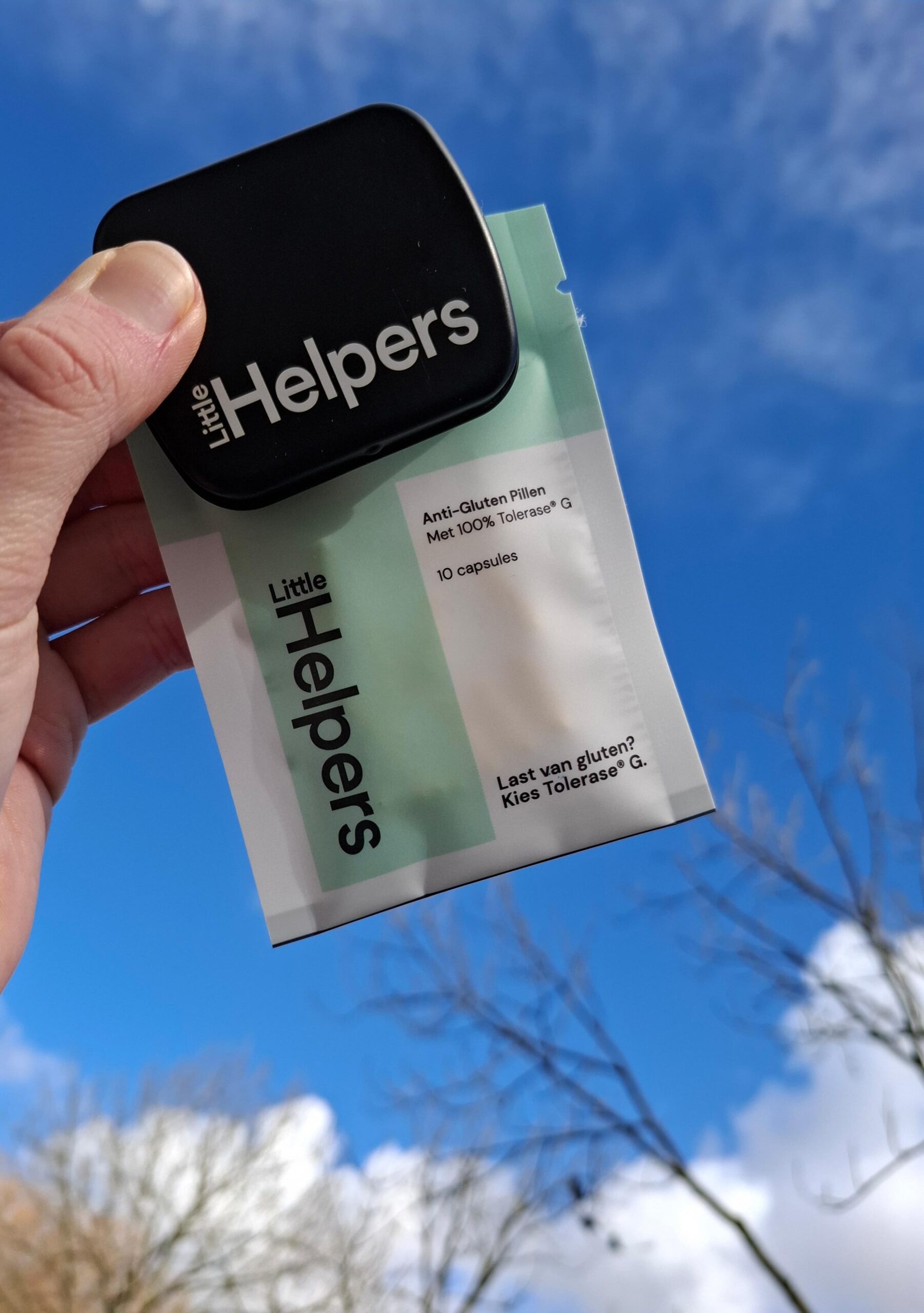
by Elise Wessels, the Netherlands
Celiac disease is a chronic gastrointestinal immune disease that is estimated to affect 1% of the population worldwide with variation across countries, but not everyone has been diagnosed yet. One of the reasons for this is the variety of symptoms of coeliac disease. The classic symptoms are diarrhea, weight loss, and malnutrition. However, someone with celiac disease can also experience other symptoms such as fatigue, constipation, anemia, osteoporosis, or other autoimmune diseases. In celiac disease, there is an inflammatory response in the small intestine triggered by gluten consumption. Gliadin is a protein in gluten that is converted in the intestine into gliadin acid by the enzyme transglutaminase 2. The resulting gliadin acid then activates certain inflammatory cells, initiating an inflammatory response. This inflammatory reaction also targets the cells of the intestine, damaging the villi in the small intestine, known as villous atrophy. Currently, a strict gluten-free diet is the only treatment available for celiac disease. However, various medications are under development, and several studies have been conducted to explore whether these medications could be applied to celiac disease.
Transglutaminase inhibition
The inhibition of transglutaminase is an exciting avenue of research in the treatment of celiac disease. Transglutaminase is the enzyme that modifies gliadin to gliadin acid which stimulates the autoimmune response. Blocking transglutaminase prevents the formation of these gluten-modified peptides and reduces the immune activation associated with symptoms and intestinal damage.
Recently, a study was published that investigated the medication ZED1227. This drug blocks the enzyme transglutaminase 2 and theoretically could prevent the inflammatory reaction in the intestines. It has already been shown that ZED1227 is safe for healthy individuals without celiac disease. A follow-up study was conducted in seven different countries to assess the efficacy and safety of the drug in adults with celiac disease. ZED1227 was administered in three different doses (10, 50, and 100 mg), and there was also a group that received a placebo. The participants had to take the medication or placebo in the morning for six weeks and then eat a biscuit containing three grams of gluten (roughly equivalent to an average slice of bread) half an hour later. For the rest of the day, they had to strictly follow a gluten-free diet. It was found that after six weeks, the villi were minimally damaged in the groups that received the ZED1227 medication, while the damage was much worse in the placebo group. Relatively many side effects were reported during the study, such as headaches, nausea, and diarrhea. However, these side effects were mild and occurred equally in both the ZED1227 and placebo groups. The study showed that the medication ZED1227 could have a positive effect on intestinal damage caused by gluten consumption. However, to confirm this with certainty, a new study with a larger group of participants must be conducted, as the groups in this study were quite small.
Breaking down gluten
A drug that can break down gluten in the stomach could be a good treatment option for people with celiac disease. This has been investigated several times, but it is difficult to develop such a drug. It must break down the majority of gluten (since 10-100 mg of gluten can already cause intestinal damage or symptoms), it must be reliable, the drug must not be broken down by stomach acid or other proteins, it must break down the gluten before it reaches the small intestine, and it must not break down other nutrients. Due to these many challenging requirements, researchers have not yet succeeded in developing such a drug.
Recently, the effect of the drug TAK-062 was studied with positive results. TAK-062 targets a specific part of gluten (proline-glutamine), which is not found in other proteins, allowing the gluten to be broken down. Laboratory tests showed that TAK-062 can break down more than 99% of the gluten in a meal (totaling 9 grams of gluten) within five minutes. Afterward, healthy individuals who participated in the study had their stomach contents analyzed to see how much gluten was broken down after eating a meal that was not gluten-free (containing 6 grams of gluten) and taking TAK-062. It was found that almost all of the gluten had been broken down after 20, 35, and 65 minutes. The study also examined whether acid suppressive medicine would alter this effect, but it had no impact. To assess the safety and tolerability of the drug, several people with and without celiac disease took different doses of the drug (100-900 mg). The drug was not found in the blood after ingestion, meaning it only works in the stomach, and it was well tolerated. This study did not show that TAK-062 is effective against disease activity, the inflammatory response, or the symptoms of celiac disease. New studies are already planned to investigate this further.
In clinical trials, ANPEP has been explored as an adjunctive treatment, alongside a gluten-free diet, to help patients tolerate accidental gluten exposure. The enzyme can potentially reduce inflammation and tissue damage caused by gluten due to the gluten-degrading activity. While promising, ANPEP therapy is still in the experimental phase, and more research is needed to fully understand its efficacy and safety.
Immune modulation
The autoimmune response in celiac disease involves a complex cascade of signals from inflammatory cells. By blocking key components of this pathway, the immune reaction can be reduced.
Tofacitinib works by inhibiting certain enzymes, which play a crucial role in signaling pathways that activate immune cells. By blocking these pathways, tofacitinib can help reduce the inflammatory response leading potentially to improved symptoms and reduced damage to the intestines. While tofacitinib is already approved for conditions like rheumatoid arthritis and ulcerative colitis, its use in celiac disease is still being explored in clinical trials. Early studies suggest that it may help manage the inflammation and symptoms associated with gluten exposure in patients who struggle with strict gluten avoidance. However, more research is needed to confirm its safety and efficacy.
Re-establishing immune tolerance to gluten
Celiac disease is characterized by a loss of immune tolerance to gluten. Re-establishing tolerance to gluten in patients with celiac disease could be a possible treatment option. It works by stimulating the immune system to recognize gluten in a non-threatening way, essentially teaching the body to accept gluten without triggering an immune response.
An example of a drug that targets the inflammatory response in celiac disease is TAK-101, and its goal is to restore gluten tolerance. The drug contains gliadin (the protein in gluten that triggers the inflammatory response in the intestine), surrounded by other small particles. These particles activate cells in the body that suppress the immune response against gliadin, thereby ultimately reducing the inflammatory reaction in the intestines. A study showed that this drug was well tolerated and safe. Participants experienced mild side effects such as headaches, back pain, fatigue, and abdominal discomfort. The second part of the study showed that TAK-101 caused an 88% reduction in the inflammatory cells that produce IFN-γ (an inflammatory protein that is significantly produced after eating gluten in celiac disease). This could be an indication that the drug has a positive effect on the inflammatory response in the intestines.
Conclusion
In conclusion, many different types of medications are in development that, in addition to the gluten-free diet, could potentially be a treatment option for celiac disease. One approach focuses on inhibiting transglutaminase, an enzyme that modifies gluten and triggers the autoimmune response. Blocking this enzyme could reduce immune activation and intestinal damage in patients. Another potential treatment involves breaking down gluten in the stomach, preventing it from reaching the small intestine. However, developing such a drug is challenging. Immune modulation is another mechanism, where targeting specific components of the immune response could reduce inflammation and immune activation caused by gluten. Finally, re-establishing immune tolerance to gluten by retraining the immune system to recognize it as non-threatening is another promising treatment approach, helping the body accept gluten without triggering an immune response. While there are several medications in development for celiac disease with different mechanisms, more research has to be done before these potential treatments can be implemented in the treatment for celiac disease.
Sources
Machado MV. New Developments in Celiac Disease Treatment. Int J Mol Sci. 2023 Jan 4;24(2):945. doi: 10.3390/ijms24020945. PMID: 36674460; PMCID: PMC9862998.
Schuppan, D., et al. CEC-3 Trial Group. (2021). A randomized trial of a transglutaminase 2 inhibitor for celiac disease. The New England Journal of Medicine, 385(1), 35–45.
Pultz, I. S., et al. (2021). Gluten degradation, pharmacokinetics, safety, and tolerability of TAK-062, an engineered enzyme to treat celiac disease. Gastroenterology, 161(1), 81–93.
Kelly, Ciarán P., et al. (2021). TAK-101 nanoparticles induce gluten-specific tolerance in celiac disease: a randomized, double-blind, placebo-controlled study. Gastroenterology, 161(1), 66–80.
